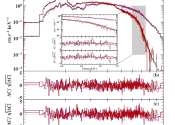Mars likely had cold and icy past, new study finds
The question of whether Mars ever supported life has captivated the imagination of scientists and the public for decades. Central to the discovery is gaining insight into the past climate of Earth's neighbor: Was the planet ...









